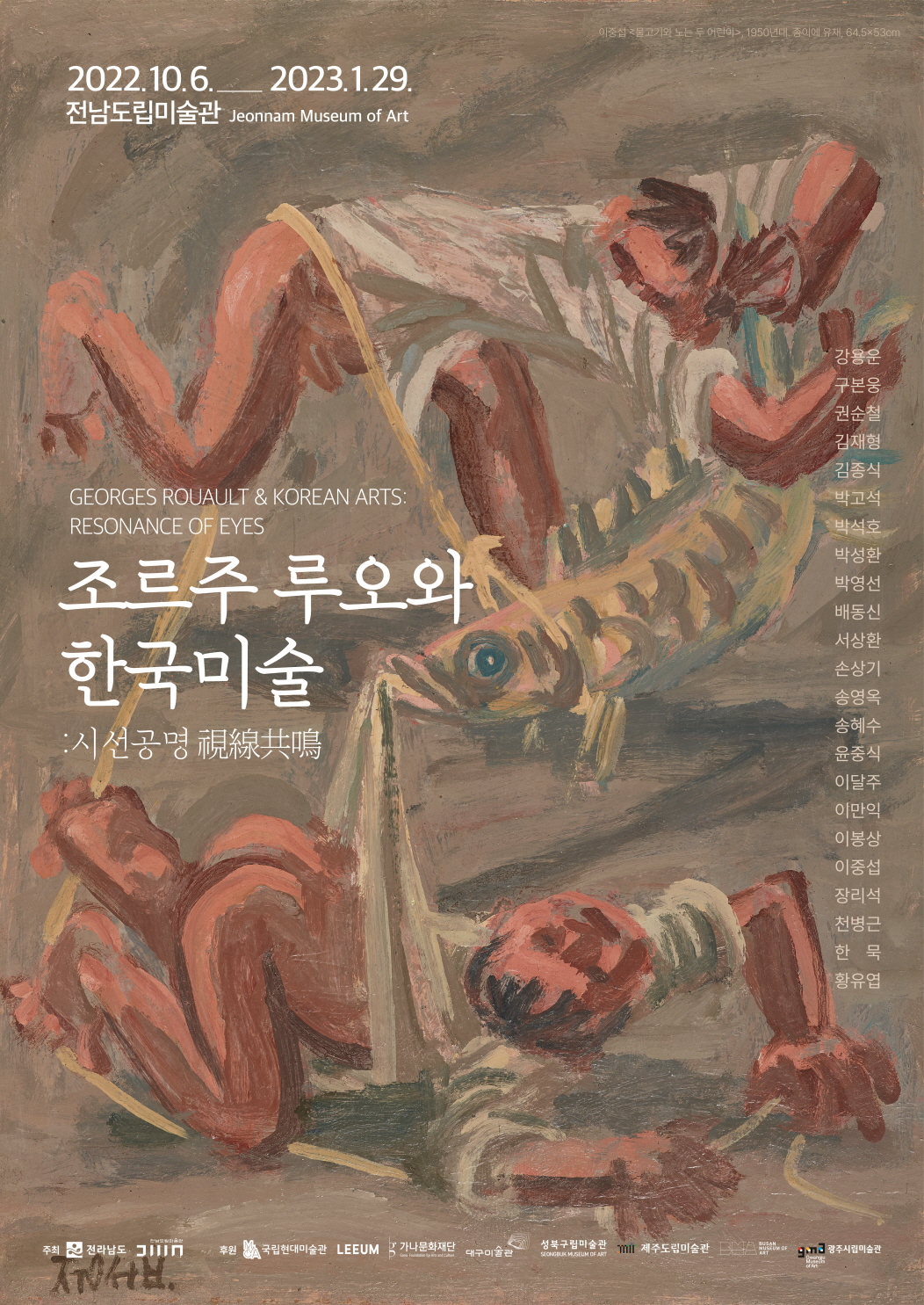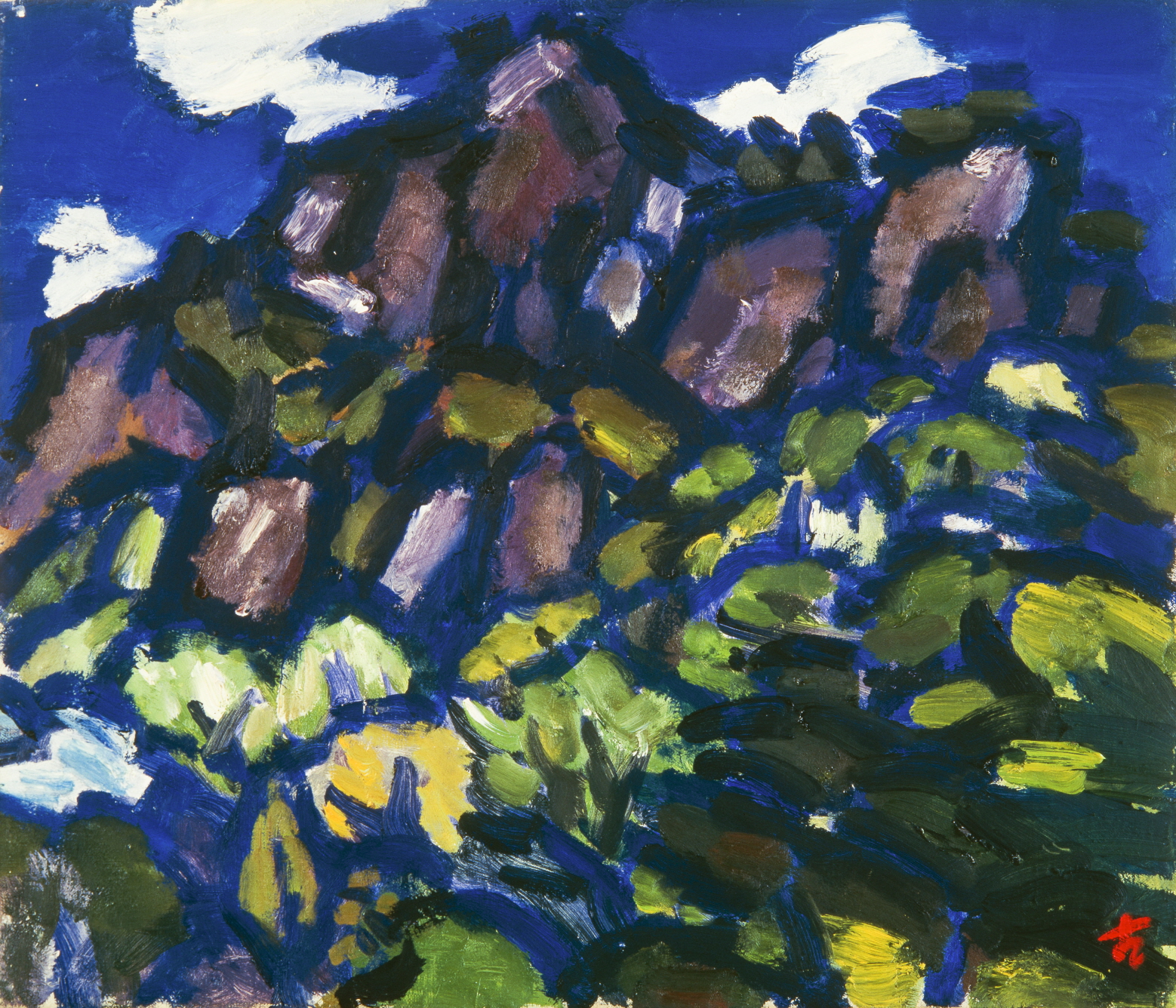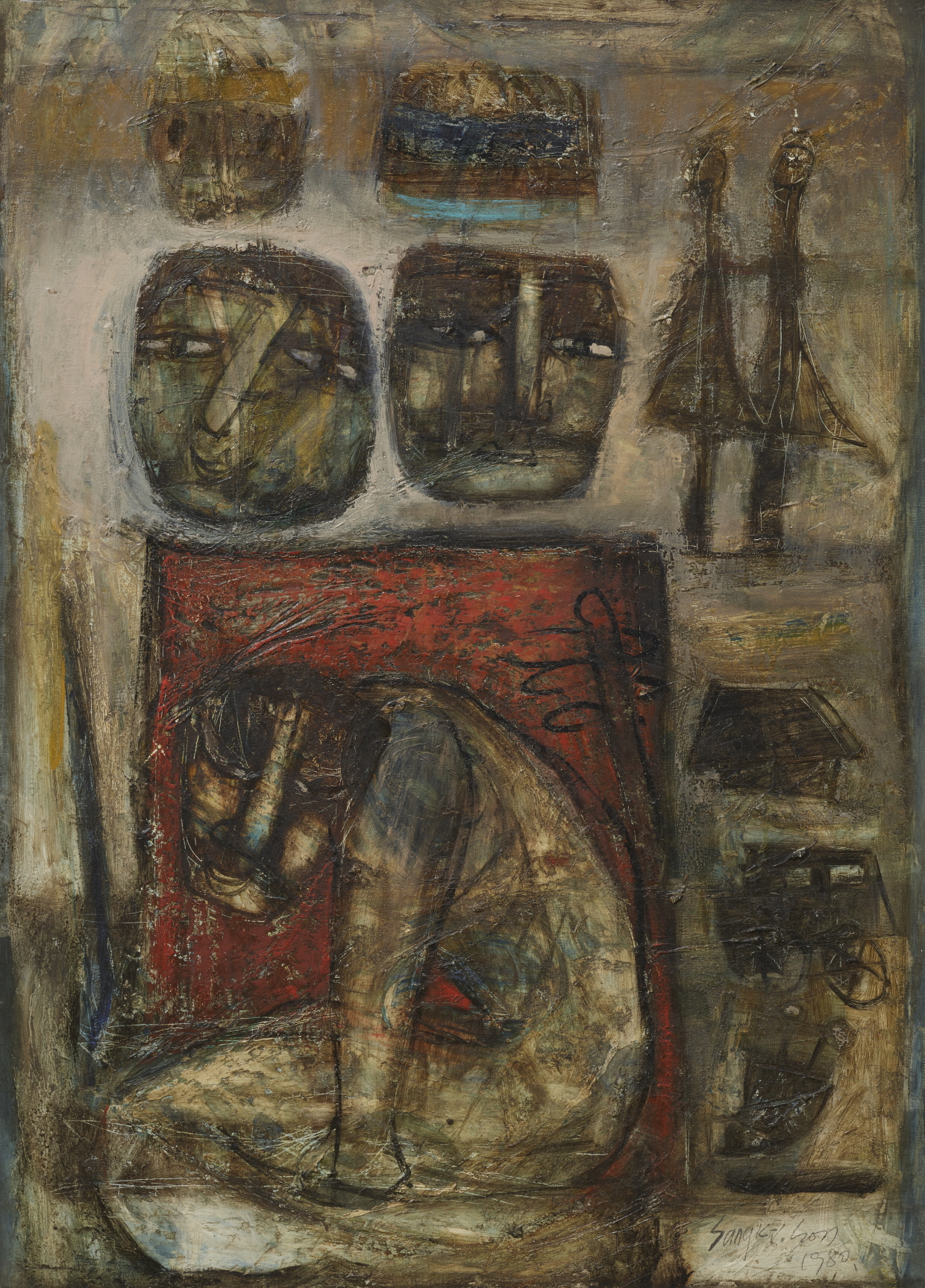Georges Rouault & Korean Arts : Resonance Of Eyes

- Special exhibition
- Date 2022-10-06 ~ 2023-01-29
- Place Jeonnam Museum of Art
- ArtistKang Yong Un, Gu Bon Ung, Kwun Sun Cheol, Kim Jae Hyung, Kim Jong Sik, Park Ko Suk, Park Souk Ho, Park Sung Hwan, Park Young Seun, Bae Dong Shin, Seo Sang Hwan, Son Sang Ki, Song Young Ok, Song Hye Soo, Yoon Jung Sik, Lee Dal Ju, Lee Man Ik, Lee Bong Sang, Lee Jung Seop, Chang Lee Suok, Cheon Pyong Kun, Han Mook, Hwang You Yup
- Works55 pieces
- Fee15,000won
- SponsorJeonnam Museum of Art
Introduction
The modern history of Korea in the 20th century was followed by a period of rapid social changes which included the Japanese occupation, liberation, division of the nation, the Korean War, the 4.19 Revolution, the 5.16 Military Coup, democratic movement, etc. In a period of turbulence and reverberation, Korean artists of the 1920s and 30s encountered Western art trends by studying in Japan. As various Western art trends of the past were accepted, the Korean art circle experienced chaos and confusion. During this period, many Korean artists learned of Georges Rouault whose work was introduced as fauvism and religious paintings and became fascinated by his unique art style of focusing on the reality of marginalized people. The black outlines and e-x-p-r-e-s-s-i-o-n of solemn matiere in particular were continued by Gu Bonung, Lee Jungseob, Park Goseok and Song Hyesu and the e-x-p-r-e-s-s-i-o-n style of observing the times by reproducing visual objects became prevalent. At the same time, Lee Jungseop (1916-1956) who admired Rouault expressed his deep thoughts regarding the reality he experienced with strong lines and colors and was called the ‘Rouault of the East’ and Son Sangki (1949-1988) metaphorically expressed the dignity of life by placing his social gaze at the lower stratum.
After the Korean War(1950-1953), the younger generation of artists became more active in expressing the reality of the times with a new formative language and took an interest in avant-garde art which defied tradition. In addition, there was an increase in paintings with conscious concepts and e-x-p-r-e-s-s-i-o-nist works based on an era of loss due to war, in other words, reality, became mainstream. Later, Korean contemporary art in the 1970s was identified by efforts to create Korean art based on simple outlooks on nature and the 1980s was a time when the active interests of artists in the subject matter of paintings and social and historic reality were specifically connected. In addition, the joint reform movements and large-scale art groups’ formative movements became active and expanded the field of Korean contemporary art.
This exhibition distinguishes the period of experimental reform of Korean art from the 1940s to after the Korean War and from the 1970s to before the revival period of Korean contemporary art in the 21st century and consists of two sections – Part 1, ‘The Figurative Reality of the 1940-60s’ and part 2, ‘The Realistic Reality of the 1970-90s’. Part 1 consists of works that refuted the previous art circle which was rigid due to cultural pressure by the Japanese and expressed natural scenery, women, still life objects and the post-war period situation with bold lines and intense colors similar to Rouault’s painting style. Also, since the 1970s, as artists’ interests regarding social reality became more specific, the subjects of their works became diverse such as images of an industrial society, restoration of daily life, new interpretation of human existence, etc. Part 2 presents the works of artists of the latter period who expressed the basic materials of life at that time, religious themes and other narratives.
Although the pain suffered in reality is different, the artistry of Georges Rouault who tried to see a side of society through humane aspects is not different from Korean artists who presented artistry by participating in reality through the reproduction of visual objects. This exhibition focuses on the artistry of modern and contemporary Korean artists who were inspired by Rouault’s style and experimental spirit through various channels since the early 20th century along with the artistic views of artists from South Jeolla who creatively expressed the avant-garde spirit of the times. On the one hand, this exhibition, ‘George Rouault and Korean Arts’, which focuses on the new existence of the development process of Korean art in the 20th century, has limitations as the interpretation of connotative meaning and verification of association are somewhat vague. In the future, we plan to expand the concreteness of this exhibition which reflects the times and art through a clear research process that provides a historical basis. We hope this exhibition will be an opportunity to connect different eras and discover another world and resonate the touching emotions and reverberations stemming from that experience.
After the Korean War(1950-1953), the younger generation of artists became more active in expressing the reality of the times with a new formative language and took an interest in avant-garde art which defied tradition. In addition, there was an increase in paintings with conscious concepts and e-x-p-r-e-s-s-i-o-nist works based on an era of loss due to war, in other words, reality, became mainstream. Later, Korean contemporary art in the 1970s was identified by efforts to create Korean art based on simple outlooks on nature and the 1980s was a time when the active interests of artists in the subject matter of paintings and social and historic reality were specifically connected. In addition, the joint reform movements and large-scale art groups’ formative movements became active and expanded the field of Korean contemporary art.
This exhibition distinguishes the period of experimental reform of Korean art from the 1940s to after the Korean War and from the 1970s to before the revival period of Korean contemporary art in the 21st century and consists of two sections – Part 1, ‘The Figurative Reality of the 1940-60s’ and part 2, ‘The Realistic Reality of the 1970-90s’. Part 1 consists of works that refuted the previous art circle which was rigid due to cultural pressure by the Japanese and expressed natural scenery, women, still life objects and the post-war period situation with bold lines and intense colors similar to Rouault’s painting style. Also, since the 1970s, as artists’ interests regarding social reality became more specific, the subjects of their works became diverse such as images of an industrial society, restoration of daily life, new interpretation of human existence, etc. Part 2 presents the works of artists of the latter period who expressed the basic materials of life at that time, religious themes and other narratives.
Although the pain suffered in reality is different, the artistry of Georges Rouault who tried to see a side of society through humane aspects is not different from Korean artists who presented artistry by participating in reality through the reproduction of visual objects. This exhibition focuses on the artistry of modern and contemporary Korean artists who were inspired by Rouault’s style and experimental spirit through various channels since the early 20th century along with the artistic views of artists from South Jeolla who creatively expressed the avant-garde spirit of the times. On the one hand, this exhibition, ‘George Rouault and Korean Arts’, which focuses on the new existence of the development process of Korean art in the 20th century, has limitations as the interpretation of connotative meaning and verification of association are somewhat vague. In the future, we plan to expand the concreteness of this exhibition which reflects the times and art through a clear research process that provides a historical basis. We hope this exhibition will be an opportunity to connect different eras and discover another world and resonate the touching emotions and reverberations stemming from that experience.
Artist
Kang Yong Un, Gu Bon Ung, Kwun Sun Cheol, Kim Jae Hyung, Kim Jong Sik, Park Ko Suk, Park Souk Ho, Park Sung Hwan, Park Young Seun, Bae Dong Shin, Seo Sang Hwan, Son Sang Ki, Song Young Ok, Song Hye Soo, Yoon Jung Sik, Lee Dal Ju, Lee Man Ik, Lee Bong Sang, Lee Jung Seop, Chang Lee Suok, Cheon Pyong Kun, Han Mook, Hwang You Yup
Works

Gu Bon Ung, A Blue-haired Woman, 1940s, Oil on canvas, 72.5x57.8cm, Leeum Museum of Art

Cheon Pyong Kun, Coming Home, 1957, Oil on canvas, 45x91cm, Bereaved Family

Park Ko Suk, Baegamsan Mountain, 1979, Oil on canvas, 45.8x53.3cm, MMCA collection

Son Sang Ki, Three Days after The Breakup, 1980, Oil on canvas, 79x61cm, MMCA collection